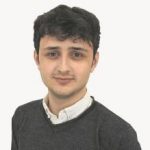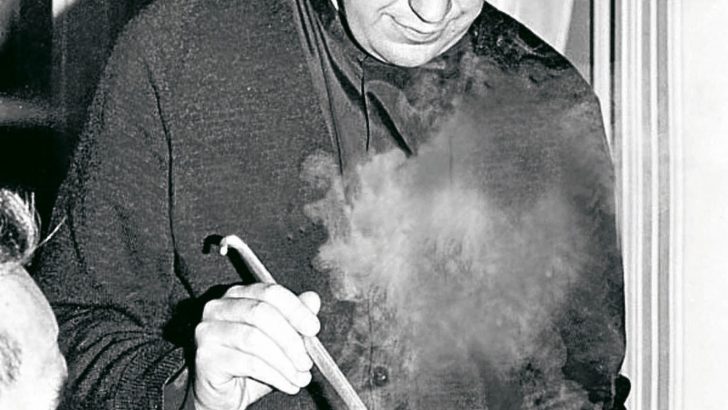The Pope in Ireland
Praised globally for reaching out to those on the margins, and for touching the hearts and minds of millions of people, our current Pontiff has made a magnanimous impact in the world today. But what is the story behind the man in the white robes? Who is Pope Francis?
Jorge Mario Bergoglio was born on December 17, 1936, in Buenos Aires, the capital of Argentina to Italian immigrants. They left the country in 1929 to escape the fascist rule of Benito Mussolini. His father was a railway worker and his mother, a homemaker. Bergoglio was the eldest of his four siblings. In his youth, the Pope studied in public schools and in high school, obtaining a technical certification as a chemist.
Despite later working as a bar bouncer, a janitor sweeping floors, and also running tests in a chemical laboratory, his perennial desire to become a priest only grew stronger as he got older.
As a young boy, Bergoglio mused that he would one day become a priest. Growing up in Barrio de Flores, his neighbourhood crush, Amalia Damonte, has said in interviews that when they were 12, Pope Francis said that, if he could not marry her, he would put on a collar.
Choice
However, his choice of vocation isn’t reducible to the outcome of an unrequited infatuation, but also due to his religious upbringing, and the influence of a priest who he was inspired by, after passing a Church to go to Confession.
Before joining the priesthood, the Pope, aged 21, became gravely ill with severe pneumonia and had his right lung partially removed. Although a life-threatening sickness at the time, the Vatican spokesperson, Jesuit Fr Federico Lombardi, has confirmed that it is “not a handicap” in the Pope’s life.
However, the impaired lung was a cause of speculation in 2013 when it was rumoured that the Pope didn’t sing or chant in Mass because of this infirmity. In response, Lombardi joked that there was a saying that a Jesuit ‘nec rubricat, nec cantat’, meaning Jesuits are famed for not being enthusiastic about liturgical song or are experts in detailed liturgical rubrics. He suggested instead, that the Pope’s lack of singing is due to “a certain hoarseness” or huskiness in his voice.
Following his short illness, in 1958 Pope Francis entered the novitiate of the Society of Jesus. During this period, he had a crush on a girl he met and doubted whether to continue pursuing his vocation. However, two years after entering the novitiate, the Pontiff took the perpetual vows of poverty, chastity and obedience as a Jesuit.
*****
Between 1964 and 1965, he taught literature and psychology at a Jesuit secondary school in Santa Fe, Argentina, and in 1966, he taught at the prestigious Colegio del Salvador secondary school in Buenos Aires.
In 1967, he returned to his theological studies and was ordained a priest on December 13, 1969. After his perpetual profession as a Jesuit in 1973, he became master of novices at San Miguel. Later that same year, he was elected superior of the Jesuit province of Argentina and Uruguay.
He has said that initially, his mother did not support his decision to enter the priesthood, despite the fact that she was a devout Catholic. By the time he was ordained, however, she accepted his calling and asked for his blessing at the end of his ordination ceremony.
Even though Pope Francis remained very close to his family, he would often skip their barbeques to spend Sundays or holidays in Buenos Aires’ slums, the Pope’s sister has said. The city had a population of over 2.5 million, and Bergoglio visited these areas where crime was rife and destructive.
“That’s the way he is: totally devoted to the mission of a priest; he is the pastor of the least,” said Maria Elena Bergoglio in 2013.
“We’ve always had a very close relationship despite the 12-year age difference. I was the youngest and Jorge always pampered and protected me,” she said of her brother. “Every time I had a problem, I’d go running to him, and he was always there.”
“Jorge taught me to always be there for people, to always be welcoming, even if it meant sacrificing something,” she said. She named her first-born son Jorge, “in honour of my special brother”, who also was moved to be asked to be the child’s godfather.
The Pope’s nephew, Jorge, 37, also said that his uncle “is someone who is very open, we talk about everything, long talks”. Bergoglio added the the media had only been reporting on her brother’s love of tango, opera and soccer, but that very few people know he is an excellent cook. “He makes fantastic stuffed calamari; it’s his favourite dish,” she said.
Position
However, the food preferences of the Pontiff were not the main concern for the media following controversy that arose over the position taken by Francis during Argentina’s 1976-1983 military dictatorship, which cracked down brutally on political opponents. Estimates of the number of people killed and forcibly disappeared during those years range from about 13,000 to more than 30,000.
Citing a case in which two young Jesuits were detained by the military regime, critics say that the Jesuit provincial did not do enough to support Church workers against the military dictatorship. However, in 2013, the Argentine Nobel Peace Prize laureate, Adolfo Perez Esquivel said “the Pope had nothing to do with the dictatorship…he was not an accomplice”.
Journalists
Speaking to journalists after his private meeting with Pope Francis at the Vatican in March of that year, Perez said the future Pope, then-Jesuit Father Jorge Mario Bergoglio, “was not among the bishops who were in the front line of the defence of human rights because he preferred a silent diplomacy to ask about the missing, about the oppressed”.
In relation to the claims that he played a role in the kidnapping of two priests, Vatican spokesperson Lombardi said it was never a concrete or credible accusation, but rather, Francis did much to protect many people during the military dictatorships.
*****
In 1980, Francis was named the rector of the Philosophical and Theological Faculty of San Miguel. Before taking up this new appointment, he spent the first three months of 1980 in Ireland to learn English, staying at the Jesuit Centre at the Milltown Institute of Theology and Philosophy, Dublin. In 1986, he spent several months in Germany finalising his dissertation topic, and ultimately settled on exploring the work of the German/Italian theologian Romano Guardini.
In May 1992, Bergoglio was appointed auxiliary bishop of Buenos Aires. He was one of three auxiliaries and he kept a low profile, spending most of his time caring for the Catholic university, counselling priests and preaching and hearing Confessions. On June 3, 1997, he was named coadjutor archbishop and he was installed as the new archbishop of Buenos Aires on February 28, 1998.
As archbishop, he was known simply as “Father Jorge”, and he adopted the attitude that the Church belongs in the street. He built chapels and missions in poor areas and sent seminarians to serve them.
He often spoke out often against injustice, such as the treatment of migrant workers from neighbouring countries and those lured into the sex trade, and against social issues such as abortion and same-sex marriage. Three years later, in February 2001, he was elevated to cardinal by Pope John Paul II, named the cardinal-priest of Saint Robert Bellarmino. In 2005, he was named president of the Bishops’ Conference of Argentina, serving in that position until 2011.
After serving as archbishop and cardinal for over 12 years, Bergoglio was elected to the papacy on March 13, 2013, becoming the 266th Pope of the Catholic Church, and the first Latin American and Jesuit to do so. His election surprised analysts at the time, but press reports have indicated that in the 2005 conclave that elected Pope Benedict XVI, Bergoglio received the second-highest number of votes.
jjjjj
The markings of his humble papacy were evident from its very beginnings, given reports that he snuck out of Vatican City the morning of his election to pray in a Roman Basilica. Indeed, his decision to ditch the papal red shoes popularised by former Popes and to take up residence in a simple two-room apartment conveyed to Catholics across the world his intentions to focus on the poor and issues of social justice.
Addressing a crowd of tens of thousands in St Peter’s Square, after his selection by the conclave, Pope Francis stated: “As you know, the duty of the conclave was to appoint a bishop of Rome. It seems to me that my brother cardinals have chosen one who is from faraway…here I am. I would like to thank you for your embrace.”
Since then, the Pope has received world-wide acclaim and recognition, not only among religious, theologians and laypeople, but also secular press. He was, for example, the first Pope ever to make the cover of the famous magazine Rolling Stone, and was also named ‘Person of the Year’ by Time.
Alongside his cultural popularity, Francis has made a number of important theological contributions, as even four months after his election, he issued the encyclical ‘Lumen Fidei’ (The Light of Faith). Francis worked from a first draft completed by the then-Pope Benedict, and described it as being written with four hands. It focuses on the theological virtue of Faith, and inspires social action and devotion to God. Not disconnected to this theme, Francis explored the issues of human migration and climate change his 2015 encyclical Laudato Si’ (Praise Be To You), receiving global approbation for tackling the current social ills of our times.
Although some criticised the environmental document, water only really began to truly boil in 2016 when the Pontiff wrote a long meditation, Amoris Laetitia (The Joy of Love), on marriage and family life.
The abiding message of the document is usually ignored, following the perceived ambiguity that arose when the Pontiff reflected on the question of inviting divorced people to receive Holy Communion. For some, his clarification on this topic was a step too far, leading to dissent in conservative circles. More recently, his focus on social justice and human dignity led him to change Church teaching on the death penalty, which he declared to be “inadmissible”.
Having been Pope for five years now, Francis has and continues to make important impacts throughout the world, and his visit to Ireland will have a lasting mark on the story of the country.
Despite only having one fully-functioning lung, it seems inarguable that this humble Argentinian man has brought a full breath of fresh air to the Church and joy to its people.


 Colm Fitzpatrick
Colm Fitzpatrick Pope Francis is pictured cooking in Buenos Aires, Argentina, in an undated file photo.
Pope Francis is pictured cooking in Buenos Aires, Argentina, in an undated file photo. 